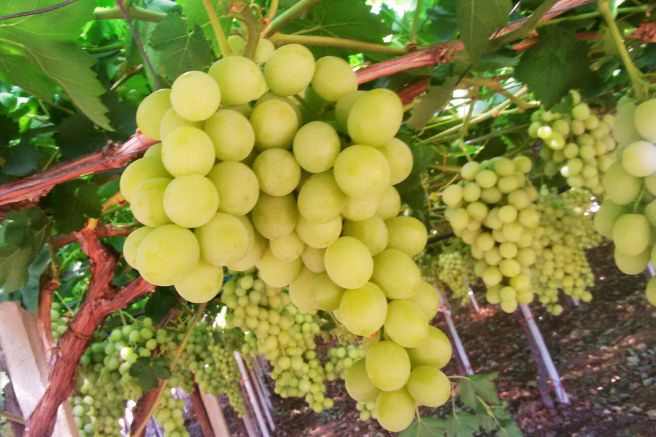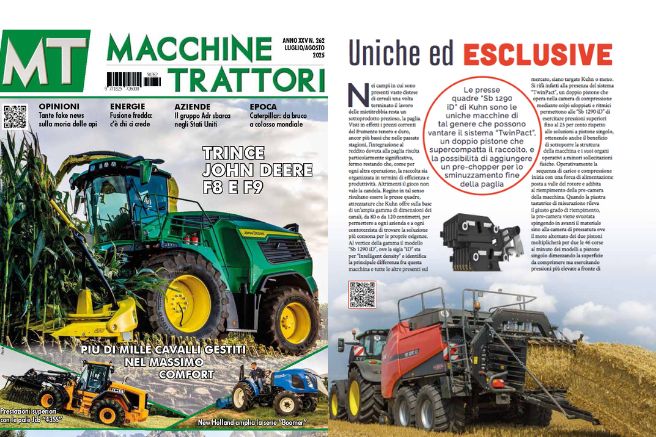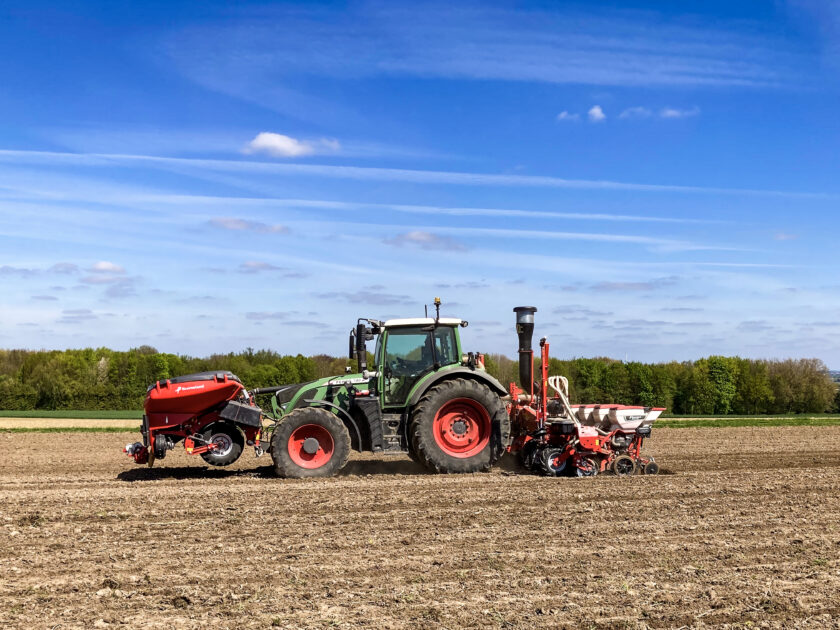
Precise and efficient, the Kverneland “Pudama” system is combined with the “Optima” series pneumatic seeders and allows 25 percent reductions in fertilizers used in localized fertilization at sowing
According to the goals set by Europe, fertilizer applications will need to be reduced by twenty percent by 2030. However, a fifth less of nutrient inputs could have significant impacts on final crop yields, so ideas are needed to produce more while using fewer fertilizers, as demanded by food demand. The only way to meet this challenge is to use what remains available more efficiently, employing technologies to reduce waste while still ensuring yields.
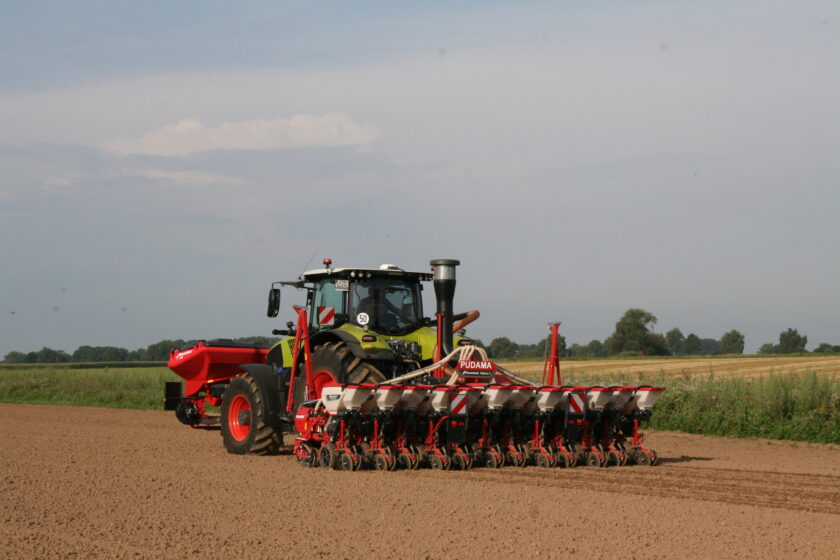
Localized fertilization at sowing, made possible by combining specific hoppers and distribution systems with seed drills, plays a primary role in this regard, especially in terms of phosphorus inputs. In fact, phosphorus is abundant in soils, but only one percent of it is in a form usable by plants. Depositing granular fertilizers close to the seeds allows for the application of completely assimilable phosphorus right where and when it’s needed, with significant advantages over broadcasting in the field.
However, localized fertilization can be further optimized to achieve additional fertilizer savings. To this end, Kverneland has developed “Pudama,” a solution for targeted fertilizer distribution, paired since 2023 with the pneumatic seed drills of the “Optima Tf Profi” series, and also available since 2024 for the “Optima F” series.
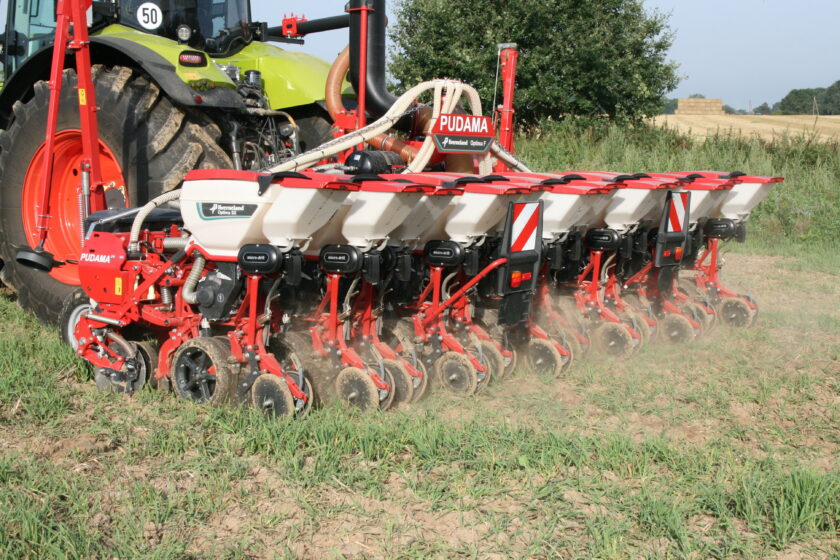
These Isobus-compatible equipment feature a vertically foldable hydraulic frame that can be equipped with eight rows for corn or 12 rows for combined use in sugar beet, corn, sunflower, and soybean, with a maximum of 16 rows in the “Hd-II” version for narrow maize and rapeseed sowing.
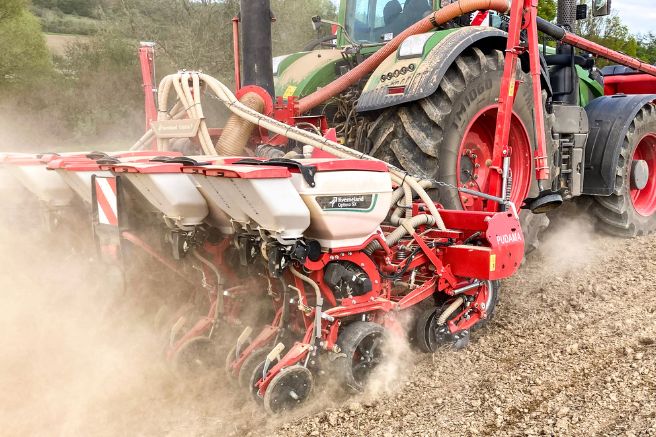
The “Pudama” system is electrically operated, ensuring maximum precision in delivery, and works through a cone formed by thin but robust nylon filaments that offer smooth movement of the fertilizer microgranules. The fertilizer is collected in the closed cone and then, through a pneumatic system, the cone is opened, separating the filaments and releasing the pre-set dose. This dose is placed five centimeters below the seeds and slightly offset laterally to allow the roots to intercept it immediately after germination. Thanks to the electronic control of the system, the entire loading and release process of the fertilizer occurs 25 times per second, allowing for high speeds due to the rapid dispensing rate.
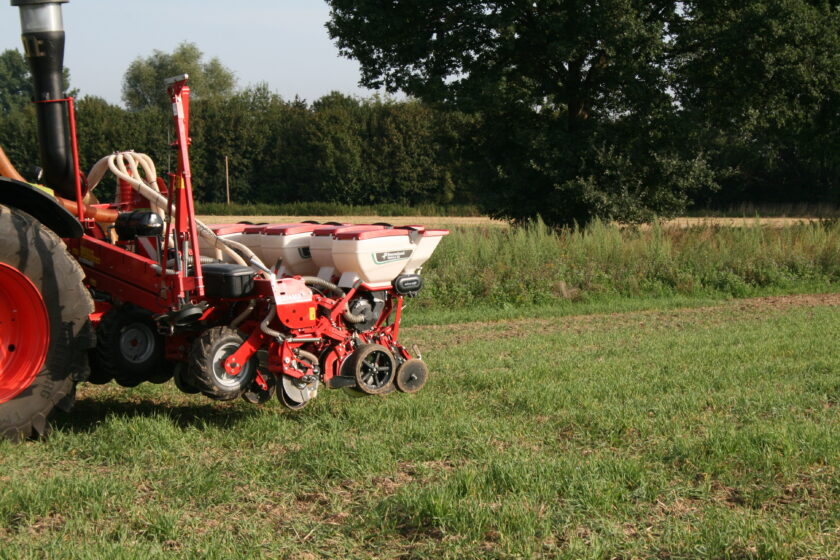
The difference from conventional localized fertilization systems is that with the “Pudama” system, fertilizer is not continuously released along the entire seeding line but concentrated around the seeds themselves. This allows for a final saving of about 25 percent of fertilizer, with obvious benefits for both the budget and the environment.
BOX
To power the “Pudama” system, Kverneland offers the front-mounted hopper carriers from the “F-Drill” series. Depending on the chosen model, these offer capacities of either 1600 or 2200 liters, ensuring high autonomy at the worksite, also thanks to the fact that only 75 percent of the fertilizers released with other solutions are used per linear meter. The combination of “Optima,” “Pudama,” and “F-Drill” finds its ideal placement in precision sowing practices for crops such as corn and sugar beet, reducing company costs while maintaining high yields.
Traslation with ChatGPT





